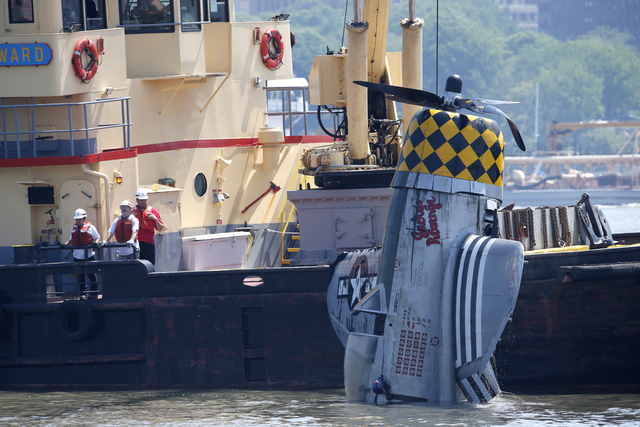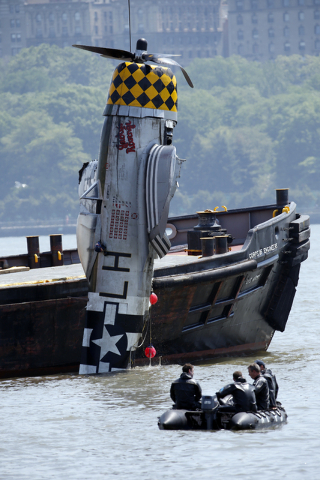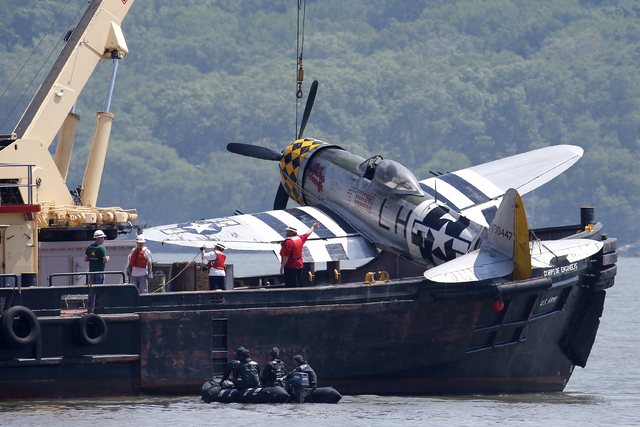Pilots honor comrade whose WWII-era plane crashed in Hudson River
NEW YORK — Air show pilots performed an aerial salute Saturday to their comrade who died after his World War II-era plane crashed in the Hudson River between New York and New Jersey a day earlier.
The P-47 Thunderbolt crashed Friday night during a promotional flight for the American Airpower Museum on Long Island, which is celebrating the 75th anniversary of the P-47 this weekend.
The plane’s pilot, William Gordon, 56, of Key West, Florida, was a veteran air show pilot with more than 25 years of experience. New York City police scuba divers recovered his body from the wreckage of the downed aircraft Friday night, about three hours after the collision.
As bagpipes played in the background on Saturday, pilots flew over the museum in an aerial salute known as a “missing man formation” in a tribute honoring Gordon.
Scott Clyman, flight operations pilot for the American Airpower Museum, called Gordon “an extraordinary pilot who understood the powerful message our aircraft represent in telling the story of American courage and valor.” Promotional material for a Key West air show last month said Gordon was an “aerobatic competency evaluator” who certified performers to perform low-level aerobatics.”
The single-seat P-47 crashed on a part of the river near where a US Airways commercial jet carrying 155 people splash-landed safely in 2009 in what became known as the Miracle on the Hudson.
The plane was pulled from the water and loaded on to a barge Saturday before it was taken to a heliport in lower Manhattan, where investigators from the Federal Aviation Administration and the National Transportation Safety Board can examine it as part of their investigation. An NTSB spokesman did not immediately respond to a request for comment Saturday afternoon.
The aircraft, which went down around 7:30 p.m. Friday, was among three planes that had departed from Republic Airport in Farmingdale, on Long Island, just east of New York City. The other two aircraft returned to the airport and landed safely.
A witness to the crash, Hunter College student Siqi Li, saw smoke spewing from the plane and thought it was doing a trick.
“It made kind of a U-turn, and then there was a stream of smoke coming from it,” Li told the Daily News. “It was tilting down toward the water. I thought they were doing some sort of trick. I didn’t realize it at first, but it was a plane crash.”
Museum spokesman Gary Lewi said the plane was kept at the museum and was taking part in an air show at nearby Jones Beach this weekend.
Clyman told fellow mourners at a service Saturday that Gordon had always been fascinated by World War II fighter planes “and he quickly demonstrated the skill to master these demanding aircraft.”
The P47-Thunderbolts were the heaviest single-engine fighter planes used by Allied forces in World War II. They first went into service in 1942, with the 56th Fighter Group based on Long Island.



















